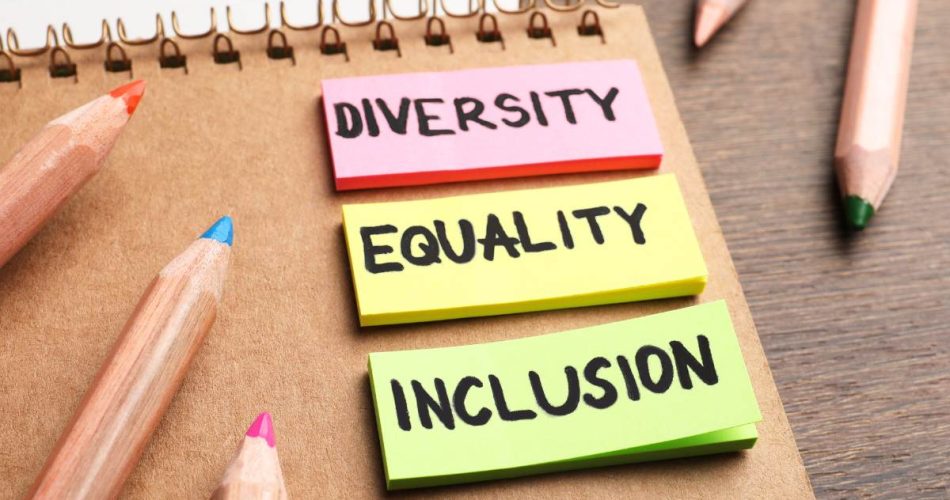In today’s increasingly interconnected world, the concepts of equity, diversity, and inclusion have become crucial to fostering a more just, innovative, and harmonious society. These principles not only reflect the values of fairness and respect but also contribute significantly to building stronger communities and organizations. Embracing equity, diversity, and inclusion is essential for creating environments where everyone has the opportunity to thrive, regardless of their background or identity. This article explores the significance of these principles and how they can be applied to a homeschool curriculum to build a better tomorrow.
Understanding Equity, Diversity, and Inclusion
Equity, diversity, and inclusion are interconnected concepts that, together, create a framework for addressing social injustices and promoting equality.
- Equity refers to fairness and justice in the distribution of resources and opportunities. Unlike equality, which emphasizes treating everyone the same, equity recognizes that individuals have different needs and circumstances and seeks to provide support accordingly to achieve fair outcomes. It involves removing barriers and addressing systemic inequalities that prevent certain groups from having the same opportunities as others.
- Diversity encompasses the presence of a wide range of different characteristics within a group, including race, ethnicity, gender, age, sexual orientation, disability, and more. Diversity is about recognizing and valuing the differences among individuals and appreciating the unique perspectives they bring.
- Inclusion is the practice of creating environments in which all individuals feel welcomed, respected, and valued. It involves actively working to ensure that diverse voices are heard and that everyone has the opportunity to participate fully. Inclusion means going beyond mere representation to foster an environment where all individuals can contribute and thrive.
The Benefits of Embracing Equity, Diversity, and Inclusion
Fostering Innovation and Creativity
A diverse and inclusive environment encourages a range of perspectives and ideas, which can lead to greater creativity and innovation. When individuals from different backgrounds come together, they bring unique viewpoints that can challenge conventional thinking and inspire new solutions. This diversity of thought is invaluable in problem-solving and driving progress.
Enhancing Organizational Performance
Organizations that prioritize equity, diversity, and inclusion often see improvements in performance and productivity. Inclusive workplaces are more likely to attract and retain top talent, as employees are more engaged and motivated when they feel valued and supported. Additionally, diverse teams are better equipped to understand and meet the needs of a varied customer base, leading to improved customer satisfaction and business outcomes.
Promoting Social Justice and Equity
By addressing systemic inequalities and promoting fair treatment, equity, diversity, and inclusion contribute to social justice. Implementing these principles helps to dismantle barriers that have historically disadvantaged certain groups, paving the way for a more equitable society. This commitment to fairness and justice is crucial for building trust and fostering positive relationships within communities and organizations.
Building Stronger Communities
Communities that embrace diversity and inclusion are more cohesive and resilient. When people feel included and respected, they are more likely to participate in community activities and contribute to collective goals. This sense of belonging strengthens social bonds and enhances community well-being. Additionally, diverse communities are better positioned to tackle complex issues and adapt to changing circumstances.
Implementing Equity, Diversity, and Inclusion in Homeschool Curriculum
Achieving meaningful progress in equity, diversity, and inclusion at homeschool requires intentional efforts and strategies:
- Develop Clear Policies and Goals: Schools and homeschools should establish clear policies that outline their commitment to equity, diversity, and inclusion. Setting specific goals and measuring progress can help ensure accountability and drive continuous improvement.
- Provide Training and Education: Offering training and educational programs to homeschool parents on topics related to equity, diversity, and inclusion can help raise awareness, build understanding, and develop skills. These programs should address unconscious bias, cultural competence, and inclusive practices.
- Foster an Inclusive Culture: Creating an inclusive culture involves more than just policies; it requires a commitment to everyday practices that promote respect and belonging. This includes encouraging open dialogue, addressing discriminatory behavior, and celebrating diversity.
- Engage and Support Diverse Voices: Actively seek out and support diverse perspectives within decision-making processes. Ensure that all individuals have the opportunity to contribute and that their voices are heard and valued.
Conclusion
Embracing equity, diversity, and inclusion is essential for building a better tomorrow. By fostering environments where everyone is treated fairly, valued, and included, we create the foundation for stronger communities and organizations. The benefits of these principles extend beyond individual success, driving innovation, improving performance, and promoting social justice. As we work towards a more equitable and inclusive society, we pave the way for a brighter future where all individuals can thrive and contribute to a shared vision of progress and harmony.




